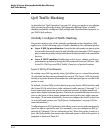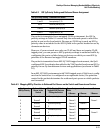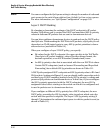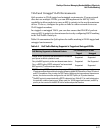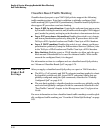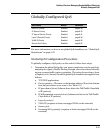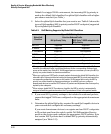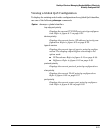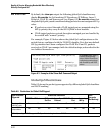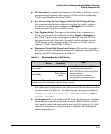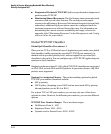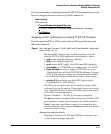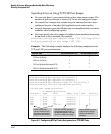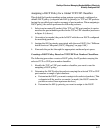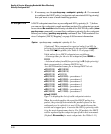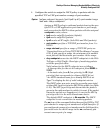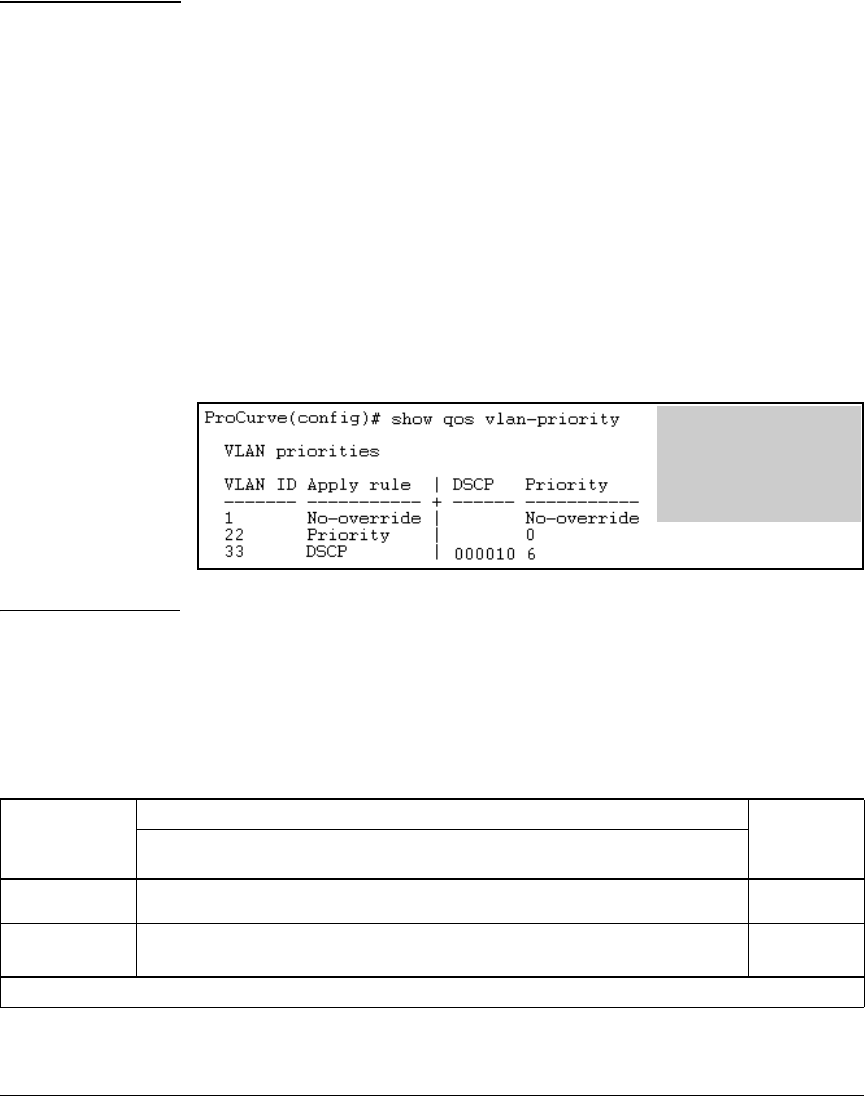
Quality of Service: Managing Bandwidth More Effectively
Globally-Configured QoS
No Override By default, the show qos output for following global QoS classifiers may
display No-override for QoS marking: IP Precedence, IP Diffserv, Layer-3
Protocol, VLAN ID, and Source-port (see Figure 6-3). No-override means that
the global QoS policy used to mark matching packets does not assign an 802.1p
value.
■ IP packets received through a VLAN-tagged port are managed using the
802.1p priority they carry in the 802.1Q field in their headers.
■ VLAN-tagged packets received through an untagged port are handled by
the switch with “normal” priority.
For example, Figure 6-3 below shows the global QoS configurations on the
switch that are configured with the VLAN ID classifier. Note that non-default
802.1p priorities have been configured for VLAN IDs 22 and 33; packets
received on VLAN 1 are managed with the default settings, as described in the
two bulleted items above.
In the show output, VLAN 1
uses the default priority
values; VLANs 22 and 33 are
configured to mark packets
with new 802.1p and DSCP
values.
Figure 6-3. Example of the Show QoS Command Output
Global QoS Restrictions
Table 6-3 shows the packet types supported by different global QoS classifiers
and DSCP marking.
Table 6-6. Restrictions for Global QoS Support
Type of Packets
Supported
Global QoS Classifiers DSCP
Overwrite
(Re-Marking)
TCP/UDP IP Device IP Type-of-
Service
Layer 3
Protocol
VLAN ID Source
Port
Incoming
802.1p
IP packets (IPv4
and IPv6
1
) only
Yes Yes Yes No No No No Yes
Layer-2 SAP
encapsulation
Yes Yes Yes Yes Yes Yes Yes Yes
1
Globally-configured QoS supports IPv6 packets starting in release K.14.01.
6-22



